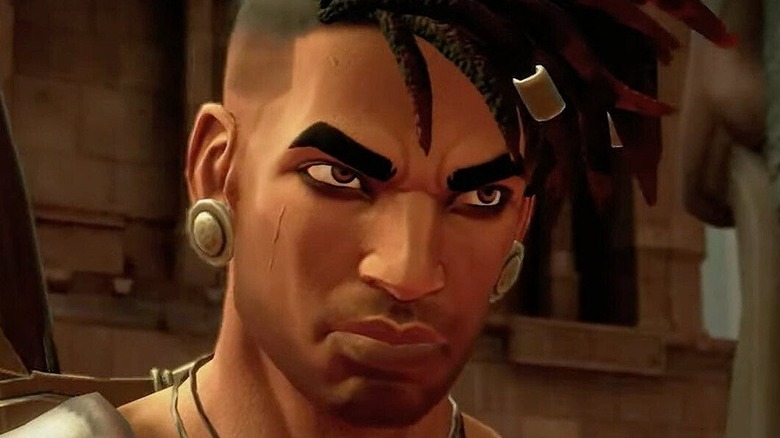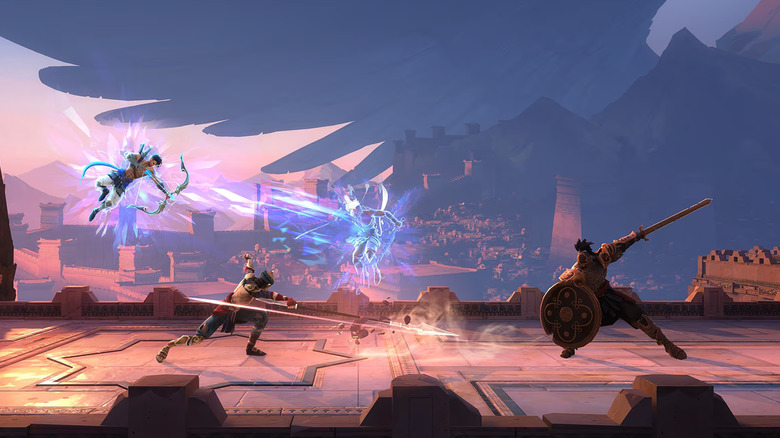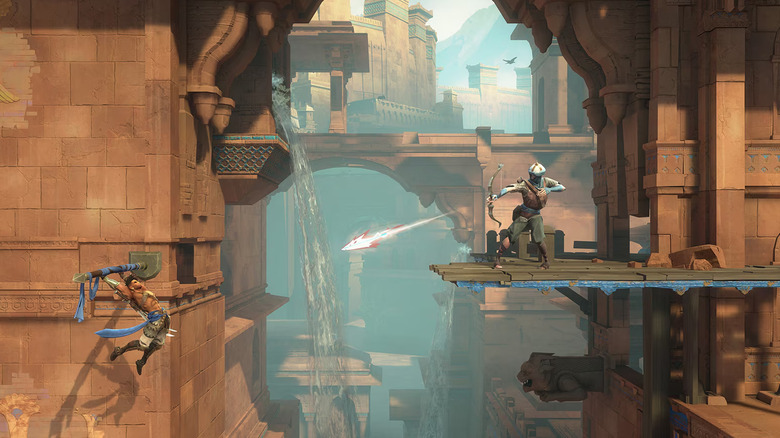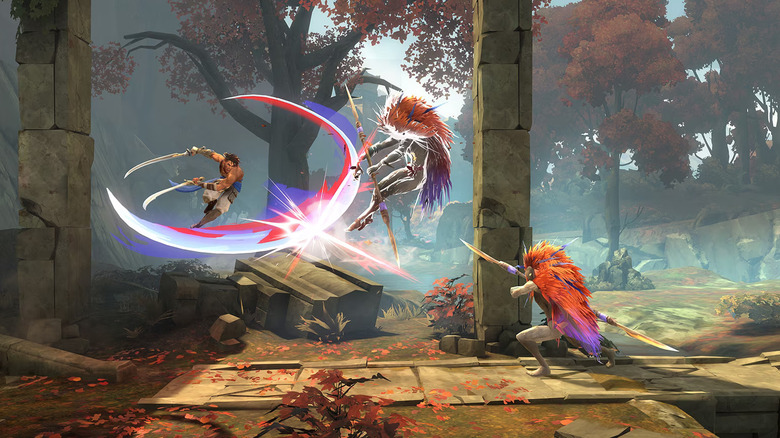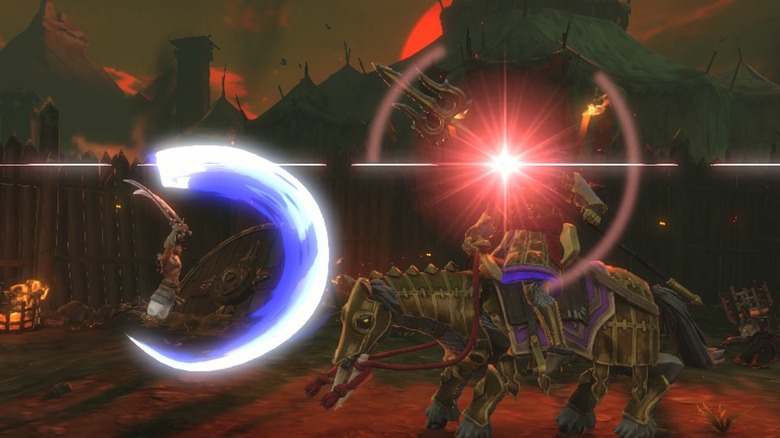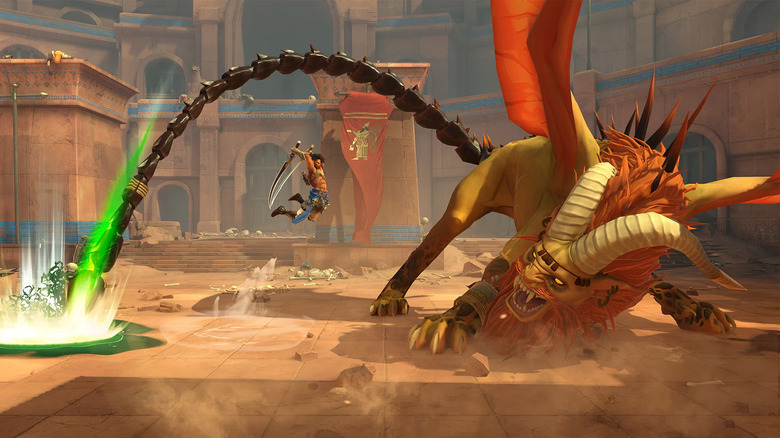Prince Of Persia: The Lost Crown Review - A New Jewel In Ubisoft's Crown
- Enthralling, fluid combat
- Two game modes allowing you to explore the world at your own pace
- Great accessibility options
- A refreshing take on a much-beloved franchise
- Some enemy mobs can be a bit redundant
A Switch review code for "Prince of Persia: The Lost Crown" was provided to SVG for this review. The game will be available on January 18, 2024, for PS4, PS5, Xbox One, Xbox Series X|S, and Nintendo Switch.
When Ubisoft showed off "Prince of Persia: The Lost Crown" at PAX West 2023, the brief glimpse left us ... cautiously optimistic. Thankfully, Ubisoft has done more than just dust off an old franchise; the developer has polished it into a gleaming gem. "The Lost Crown" is not just a return to form — it's an evolution, skillfully balancing nostalgia with innovation. "Prince of Persia: The Lost Crown" marks a triumphant return to a beloved franchise, offering a fresh story and gameplay that revitalizes the series. Ubisoft's latest installment stands tall, providing an invigorating experience that both newcomers and series veterans will find enthralling.
Unlike the previous titles in which the titular Prince was the focus, this game introduces a new protagonist, who immediately captivates with his depth and prowess — and massive dual swords. At the heart of this adventure is Sargon, a member of the elite Immortal Corps. The early stages of the game thrust Sargon into a rescue mission for Prince Ghassan, setting the stage for a gripping narrative.
Sargon's saga: A fresh face and a familiar feel
Sargon's abilities are the high point of the game. From dual-wielding to pulling off stylized finishers, the combat mechanics are fluid and satisfying, not to mention surprisingly deep. Sargon is a master of dual-sword combat, which forms the backbone of his offensive capabilities. From the outset, he has access to these swords, capable of stringing together a variety of stylish and acrobatic combos with a simple press of the attack button.
As the game progresses, Sargon's arsenal expands with the addition of a bow and a Chakram, enhancing long-range combat and interactions with the environment. The bow (which is limited by arrow count) and the constantly-available Chakram add strategic depth to engagements. Combat isn't just about offense, though. Defense also plays a crucial role. Sargon can dodge enemy attacks with a well-timed slide or dash, while parrying offers a counter to incoming damage, including powerful counterattack animations to fend off reckless enemy salvos.
The classic magic returns
The uniqueness of Sargon's combat style is further augmented by Athra surges — special abilities that draw upon a sacred energy. These surges also range from offensive to defensive capabilities and can be customized at Wak-Wak trees, adding a layer of player personalization to combat. Moreover, the game reintroduces Time Powers, which are granted by collecting feathers from the Simurgh, God of Time & Knowledge. These powers — which include abilities like air dashing, teleportation, and trapping enemies — bring new combat and puzzle-solving dynamics that longtime fans of the franchise will feel right at home exploring.
Amulets found throughout the game also provide passive bonuses that can significantly alter Sargon's combat style. These bonuses include attack boosts, healing properties, and more game-changing abilities, like revealing enemy health bars or signaling hidden treasures. It's great to have so many options that help Sargon along his journey, bringing back to life the whimsical charm synonymous with the "Prince of Persia" franchise.
Beyond button mashing
The combat in "Prince of Persia: The Lost Crown" evolves into a thrilling experience as players progress. Environmental elements are also cleverly integrated into combat scenarios, allowing players to use the surroundings to their advantage, like knocking enemies into spike traps for strategic eliminations. It's worth noting that although some enemy mob encounters can feel repetitive over time, this is balanced by the diverse range of enemy types encountered throughout the game. These varying foes, coupled with the intricacies of Sargon's various combat styles, transform battles into something more akin to a beautifully choreographed dance than a mere fight.
The boss battles in the game are particularly noteworthy. They provide a robust challenge, demanding the mix of deeper strategy and finesse that's becoming more and more common in modern 2D and 2.5D side-scrollers. Each boss fight is unique, requiring players to adapt their tactics and make full use of Sargon's abilities and the environment. This level of challenge and the satisfaction of overcoming these formidable opponents add significantly to the game's overall enjoyment.
Chronicles of a warrior
Of course, as enjoyable as it is, it's not just about the combat. Ubisoft's pivot to a more cell-shaded art style is a bold move that pays off. This approach breathes fresh life into the 2.5D platformer, creating a visually stunning experience. Backgrounds are richly detailed, enhancing the depth and immersion of the game world. This stylistic choice differentiates "The Lost Crown" from its predecessors, while still honoring the series' roots.
The game's narrative is also a standout feature. The complex relationship between Sargon and Prince Ghassan, as well as the dynamics within the ranks of the Immortals, adds layers to the story. While admittedly cheesy at times, the voice acting and character development are top-notch, providing a compelling reason to progress through the game. Layered on top of the narrative is the musical score, composed by the legendary Gareth Coker — known for his work on "Ori and the Blind Forest — which is a masterpiece that perfectly complements the game's atmosphere. The music elevates the overall experience, adding an emotional depth to both the storytelling and the gameplay.
A crown well-deserved
Ubisoft's commitment to accessibility is commendable. Features like the option to skip challenging platforming sections demonstrate an understanding of diverse player needs. This inclusivity allows a broader audience to enjoy the game without compromising on the challenge for those who seek it.
Meanwhile, the game's Metroidvania elements shine in its expansive world design. The varied environments, from the intricate corridors of The Depths to the lush Hyrcanian Forest, are a delight to explore. The addition of secrets and side quests adds to the game's depth as well, encouraging players to revisit areas and uncover all that the game has to offer. To put it plainly, the world is rife with lore and is begging to be explored. Thankfully, the game features two different modes that can be changed on the fly, allowing you to progress through the story normally or explore the semi-open world on your own terms.
"Prince of Persia: The Lost Crown" is a remarkable addition to the franchise. It strikes a fine balance between paying homage to the series' legacy and charting a new course for its future. The game excels in its narrative, gameplay mechanics, art style, and music, making it a must-play title for fans and newcomers alike. SVG's score of 9 out of 10 is well-deserved, solidifying its place as a standout title to kick off 2024. We're only in the second week of the new year, but it's easy to imagine "Prince of Persia: The Lost Crown" making it on some lists when it comes time to consider the Game of the Year.

